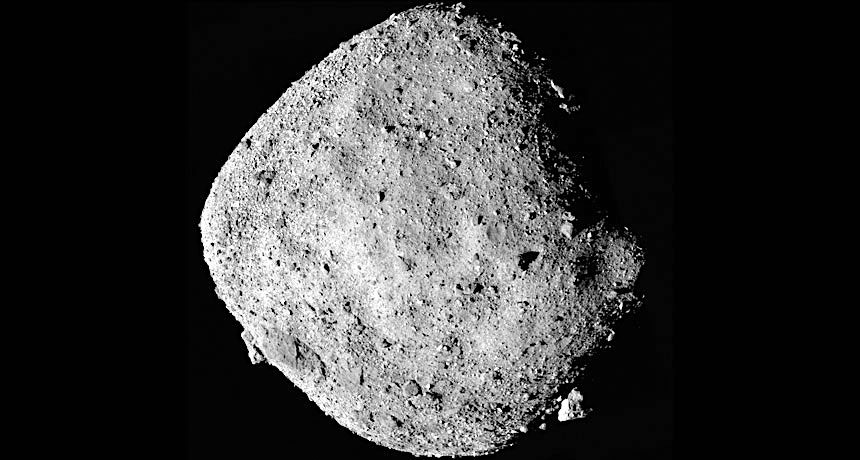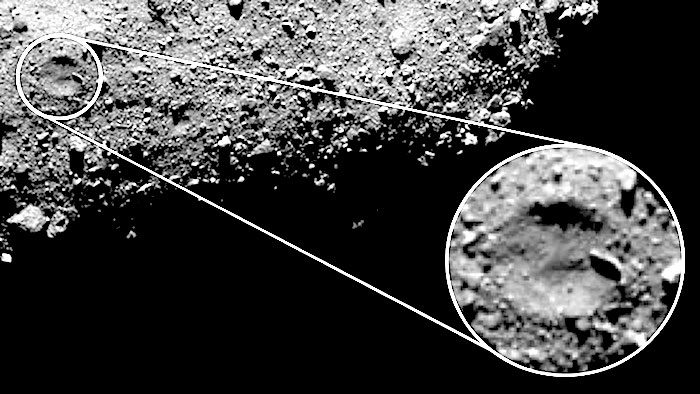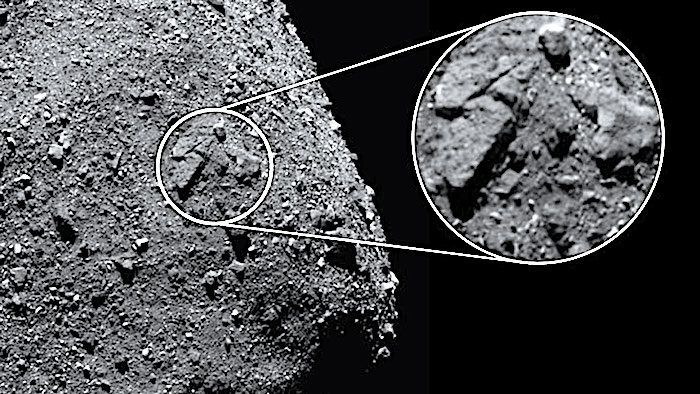
As the asteroid Bennu comes into sharper focus, planetary scientists are seeing signs of water locked up in the asteroid's rocks, NASA team members announced December 10.
"It's one of the things we were hoping to find," team member Amy Simon of NASA's Goddard Space Flight Center in Greenbelt, Md., said in a news conference at the American Geophysical Union meeting in Washington, D.C. "This is evidence of liquid water in Bennu's past. This is really big news."
NASA's OSIRIS-REx spacecraft just arrived at Bennu on December 3 (SN Online: 12/3/18). Over the next year, the team will search for the perfect spot on the asteroid to grab a handful of dust and return it to Earth. "Very early in the mission, we've found out Bennu is going to provide the type of material we want to return," said principal investigator Dante Lauretta of the University of Arizona in Tucson. "It definitely looks like we've gone to the right place."
OSIRIS-REx's onboard spectrometers measure the chemical signatures of various minerals based on the wavelengths of light they emit and absorb. The instruments were able to see signs of hydrated minerals on Bennu's surface about a month before the spacecraft arrived at the asteroid, and the signal has remained strong all over the asteroid's surface as the spacecraft approached, Simon said. Those minerals can form only in the presence of liquid water, and suggest that Bennu had a hydrothermal system in its past.
Bennu's surface is also covered in more boulders and craters than the team had expected based on observations of the asteroid taken from Earth. Remote observations led the team to expect a few large boulders, about 10 meters wide. Instead they see hundreds, some of them up to 50 meters wide.
"It's a little more rugged of an environment," Lauretta said. But that rough surface can reveal details of Bennu's internal structure and history.
If Bennu were one solid mass, for instance, a major impact could crack or shatter its entire surface. The fact that it has large craters means it has survived impacts intact. It may be more of a rubble pile loosely held together by its own gravity.
Telling scars

Some of the rocks on the surface appear to be fractured in a spindly pattern. "If you drop a dinner plate on the ground, you get a spider web of fractures," says team member Kevin Walsh of the Southwest Research Institute in Boulder, Colo. "We're seeing this in some boulders."
The boulders may have cracked in response to the drastic change in temperatures they experience as the asteroid spins. Studying those fracture patterns in more detail will reveal the properties of the rocks.
The OSIRIS-REx team also needs to know how many boulders of various sizes are strewn across the asteroid's surface. Any rock larger than about 20 centimeters across would pose a hazard to the spacecraft's sampling arm, says Keara Burke of the University of Arizona. Burke, an undergraduate engineering student, is heading up a boulder mapping project.
Cracked surface

The team also needs to know where the smallest grains of rock and dust are, as OSIRIS-REx's sampling arm can pick up grains only about 2 centimeters across. One way to find the small rocks is to measure how well the asteroid's surface retains heat. Bigger rocks are slower to heat up and slower to cool down, so they'll radiate heat out into space even on the asteroid's night side. Smaller grains of dust heat up and cool down much more quickly.
"It's exactly like a beach," Walsh says. "During the day it's scalding hot, but then it's instantly cold when the sun sets."
Measurements of the asteroid's heat storage so far suggest that there are regions with grains as small as 1 or 2 centimeters across, Lauretta said, though it is still too early to be certain.
"I am confident that we'll find some fine-grained regions," Lauretta said. Some may be located inside craters. The challenge will be finding an area wide enough that the spacecraft's navigation system can steer to it accurately.



Comment: See also: NASA's Osiris-Rex arrives at asteroid Bennu after a two-year journey